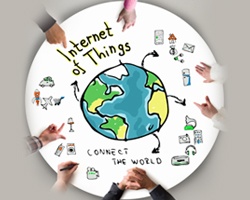
Damianos Soumelidis
Today's sensor dominated world may seem scary on the face of it, but the advantages of the internet of things far outweigh the disadvantages.
 You would be forgiven for being concerned about the impact of new technologies and trends around sensors, wearables, machine-to-machine and internet of things. From security breaches to the ‘big brother’ effect, there are enough conspiracy theories and real life examples of what can go wrong when these technologies fall into the wrong hands.
You would be forgiven for being concerned about the impact of new technologies and trends around sensors, wearables, machine-to-machine and internet of things. From security breaches to the ‘big brother’ effect, there are enough conspiracy theories and real life examples of what can go wrong when these technologies fall into the wrong hands.
Nevertheless, the truth of the fact is that these technologies developments offer far more advantages than disadvantages when used properly. Soon, they will become an indispensable part of the world’s economy.
Imagine a small business dairy farmer. Today, this is pretty much a dying business model – profit margins have been squeezed to almost nothing thanks to rock-bottom prices and strong competition. However, if many farmers unite in a milk-sharing network that provides them with access to new technologies such as sensor-based feed and health monitoring tools for the cattle, allowing early detection of health issues, quality optimization and more efficient processes, they would stand a far greater chance of long-term success. The produced milk would be ‘fed’ into the network and all parties would share the ongoing operational costs.
The milk, meanwhile, could be distributed by the sharing network (together with other goods) in sensor-controlled containers to families and individuals via a flat-fee subscription, providing our children with access to a steady supply of high quality, fresh milk.
Speaking of children, consider how the internet of things could be used to help with such things as SIDS (Sudden Infant Death Syndrome). My kids belonged to the risk group and I can tell you, continuous false alarms did nothing to improve my quality of life. I am looking forward to the day where baby monitors and other equipment will be replaced by reliable multi-sensor baby suits that track heart and breathing rates, sleeping curves, tummy movements and, last but not least, the state of their nappy, 24/7.
There are certainly many other futuristic examples I can imagine that may or may not come true. Take the Tesla car. It is packed with sensors that monitor almost every component of the car, delivering a continuous stream of (big) data. The next step in this development will be enabling cars to communicate with each other to improve traffic management – all in the name of safety, sustainability and convenience in the new collaborative economic era.
This article was originally posted in the spring edition of OnWindows magazine.




